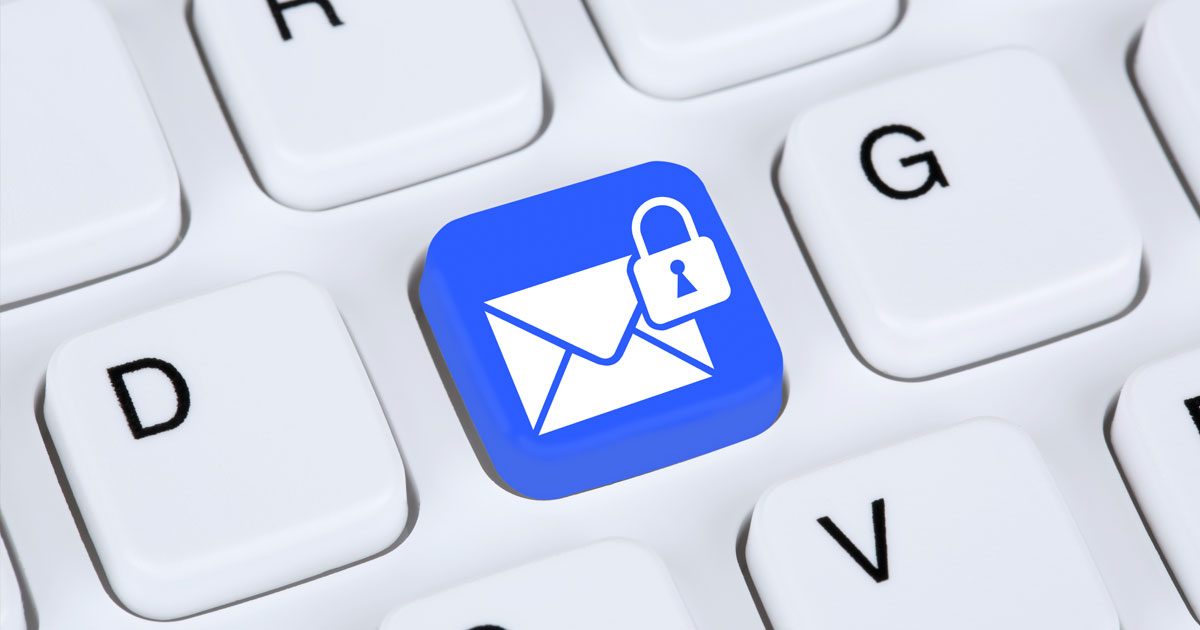Email Security: What Is It, And How Do You Improve It?

What is Email Security?
Email security is a term which describes collective techniques used to secure access to an email account and information contained in email messages. Email security is a fundamental technique for businesses and individual email users due to the widening landscape of dynamic attacks and vulnerabilities.
Without appropriate email security etiquette, an email account is susceptible to scams, phishing, malware, eavesdropping, and unauthorized access.
Aside from simply knowing what not to click on or download in an email message, there are numerous methods that you can employ to improve email security specific to your needs.
Use end-to-end email encryption
End-to-end email encryption is a method of sending encrypted email messages that can only be read by the sender and recipient. It requires that both ends have a pair of cryptographic keys, a private key and a public key. The sender encrypts the message on their local device using the recipients public key. The recipient then decrypts the message on their device using their own private key.
Email messages that are encrypted on both sides will prevent the transmission from being intercepted by a third-party. The problem with this is that configuring email encryption might be difficult and both the sender and receiver must utilize the same encryption system. If both sides are not using the same encryption system, the message is not secure once it is sent which makes it vulnerable to outsiders.
Here is an email service that offers end-to-end encrypted email messages with both free and premium accounts:
Tutanota: Tutanota is an open source email service that allows you to send end-to-end encrypted email messages. They utilize very strong SSL encryption, including DNSSEC, DANE, DAMRC, and DKIM.
Use a VPN
A virtual private network (VPN) will block intruders from monitoring email content on your end. A VPN will protect the content of your emails while they are being transmitted.
Use multi-factor authentication
Multi-factor authentication (MFA) is a method of confirming your identity using two or more factors. MFA is a great way to keep intruders out of your mailbox, even if they have your password because MFA adds an extra step or two to your basic login procedure that is unknown to potential intruders.
- Something that you know (knowledge): A password or PIN
- Something that you have (possession): Security token or smartphone
- Something that you are (inherence): Fingerprint or voice print
Using only a password to access your email account is not considered MFA, it is defined as single factor authentication (SFA) but using your password and a one-time code sent to your device is considered MFA. In fact, using your password and using a one-time code is an example of two-factor authentication (2FA), a subset of MFA.
2FA is becoming commonplace for many email service providers. Popular email services like Gmail now give you an option to enable 2FA to make your account more secure. If you enable 2FA for your Gmail account, you’ll enter your password when you sing in. Then, a code will be sent to your phone via text, voice, or in their mobile app. Gmail also allows you to use a third-party security that you enter in your USB port.
Block images from loading
Images in email messages can be dangerous. There are exploits built into images that can be used to attack a computer, spread malware, and gather sensitive information. Spammers and attackers can also use images in email messages to tell whether you opened a message.
Some email services will block images from loading by default and will render ALT text in the image’s place. If an image is blocked by default, the email service will usually ask if you want to load images when you open a message that contains an image. However, there are other email services that do not block images by default and this requires you to view the service’s settings in order to block images from loading.
